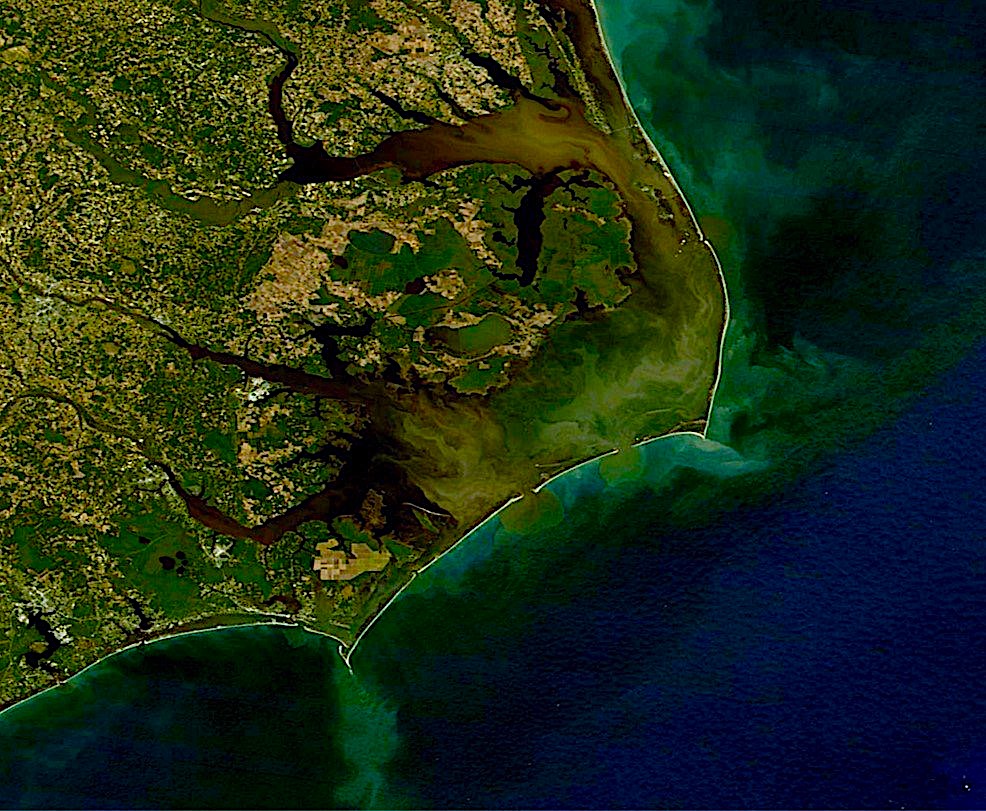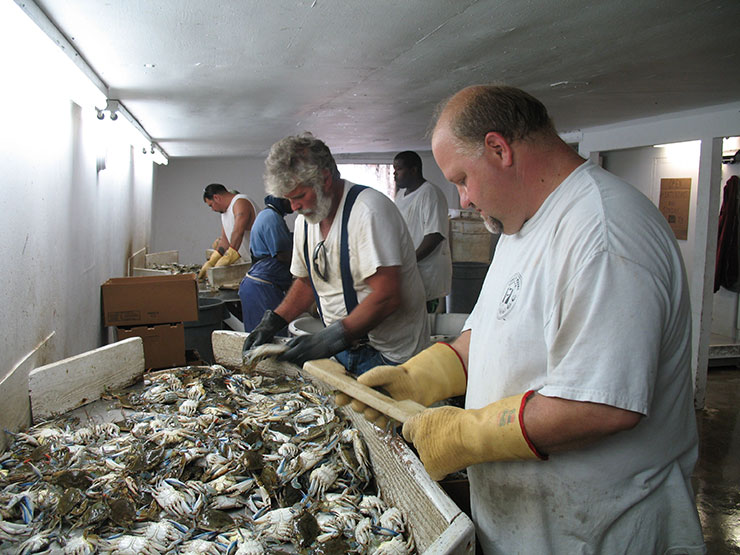SEA SCIENCE: Harvests of Perserverance: Sea Grant-Funded Innovations Showcased at State Aquaculture Conference

Donnie Perry is a utilities contractor in Gloucester, Va. But he’s always wanted to work more with his hands and run a little farm.
A fish farm, to be exact.
Perry was one of the 190 participants of the 22nd North Carolina Aquaculture Development Conference, held in Atlantic Beach in January. Co-sponsored by North Carolina Sea Grant, the annual meeting and trade show serves industry professionals and prospective investors like Perry. Marine aquaculture was a special focus this year, and Perry joined some 50 others on a tour of Carteret County mariculture operations.
“It was pretty neat, just going to an actual farm and talking to a farmer,” Perry says. “You can see it and you can taste it. It was great to look around and just take it all in.”
Statewide, North Carolina boasts a $53.8 million aquaculture industry with diverse and vibrant research and commercial partners. Such qualities drew conference participants not only from Virginia, but also from South Carolina, Appalachian North Carolina, the Piedmont and coastal North Carolina. They listened to presentations by noted husbandry researchers and seafood marketing advisers, including Tom Losordo and Harry Daniels from North Carolina State University, Wade Watanabe from University of North Carolina Wilmington and Gary Jensen from the U.S. Department of Agriculture.
The aquaculture species discussed at the conference ran the gamut — from coldwater trout to black sea bass to oysters — attracting those respective growers and representing the spectrum of opportunities in North Carolina.
Such a diversity of industry topics also enticed a suite of vendors and private sponsors. Aquaculture supply companies from Arkansas to Colorado filled the trade show booths.
“This is one of the few aquaculture conferences in the world that we sponsor,” says Amy Riedel, a manager and biologist with the Waterlife Design Group of Aquatic Eco-Systems, Inc., a Florida-based aquaculture supplier with more than 30 years in the industry.
“It’s because [North Carolina] is well organized,” Riedel says. “There’s a lot of respect for what Dr. Losordo, Dr. Daniels, Dr. Watanabe and others are doing with research here.”
But the conference helps her company too, notes Riedel. Aquaculture equipment must be customized and designed for different species and husbandry techniques. Riedel says the talks at the conference give her company an idea of what to expect in terms of industry demand from year to year.
“We benefit, too.”
Conference vendors and participants also benefited from talks by North Carolina Sea Grant staff, researchers and partners. Sea Grant’s mariculture and blue crab specialist Marc Turano led the Carteret County facilities tour, which included the Marine Aquaculture Research Center (MARC) near Marshallberg. Turano also is among the lead researchers at MARC.
Some of the facility’s design comes from research made possible by the N.C. Fishery Resource Grant Program (FRG), which is funded by the N.C. General Assembly and administered by North Carolina Sea Grant.
A number of other FRG recipients also showcased their findings at the conference.
Turano moderated a marine shellfish aquaculture session where Jim Swartzenberg of J&B AquaFood explained his techniques for larval oyster setting. Jay Styron of Carolina Mariculture Company offered lessons from his oyster growout experiments, while Mark Hooper from Hooper Family Seafood shared his ideas on bay scallop and clam aquaculture.
“It’s a great program,” Hooper says of the FRG program. “It allows us to experiment.”
Hooper’s stories reflected the overall spirit of the conference. Whether it’s improving financial stability through new marketing techniques or attempting entirely new industries like bay scallop hatcheries, newcomers and veterans at the conference shared in the ethic of success through perseverance.
“There’s a hundred things we need to learn,” Hooper says of his bay scallop trials.
“And we’re tryin’ to learn.”
To view presentations from the 2010 conference, visit online at www.ncaquaculture.org.
This article was published in the Spring 2010 issue of Coastwatch.
For contact information and reprint requests, visit ncseagrant.ncsu.edu/coastwatch/contact/.


